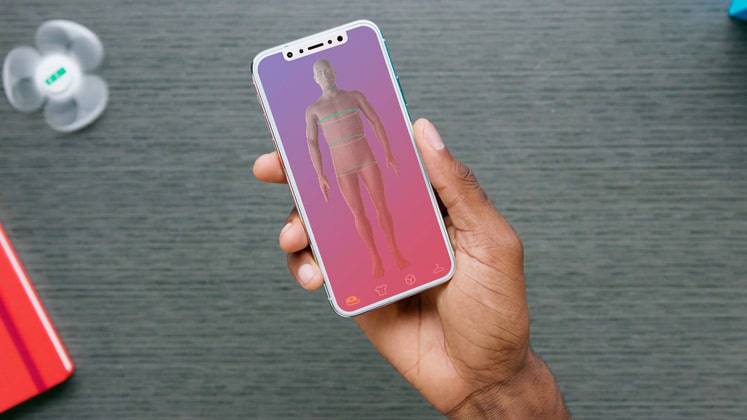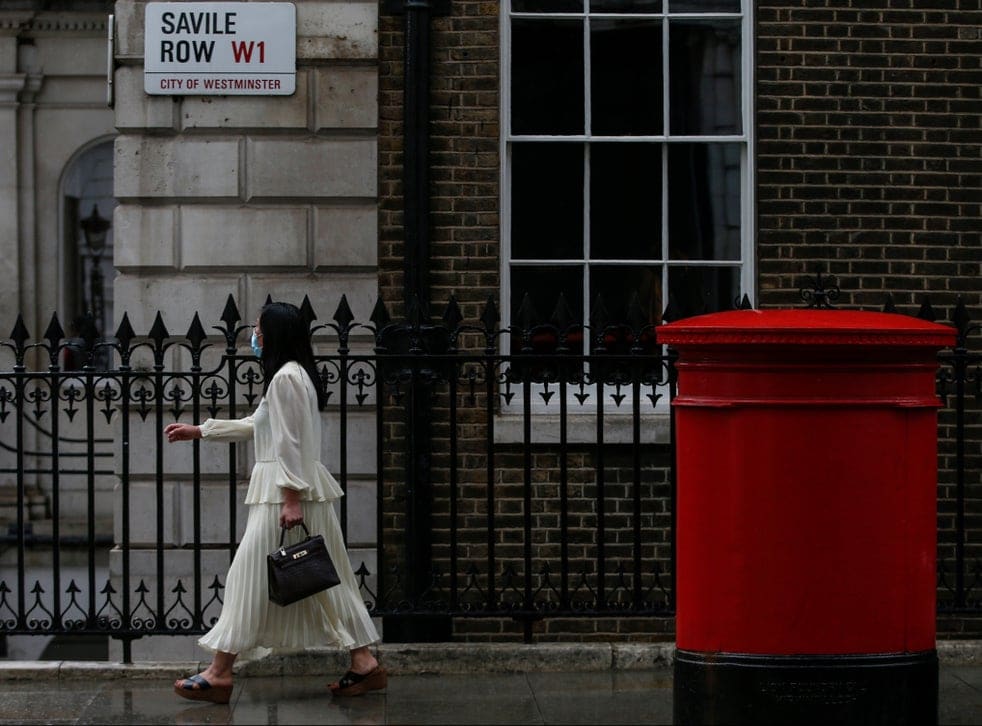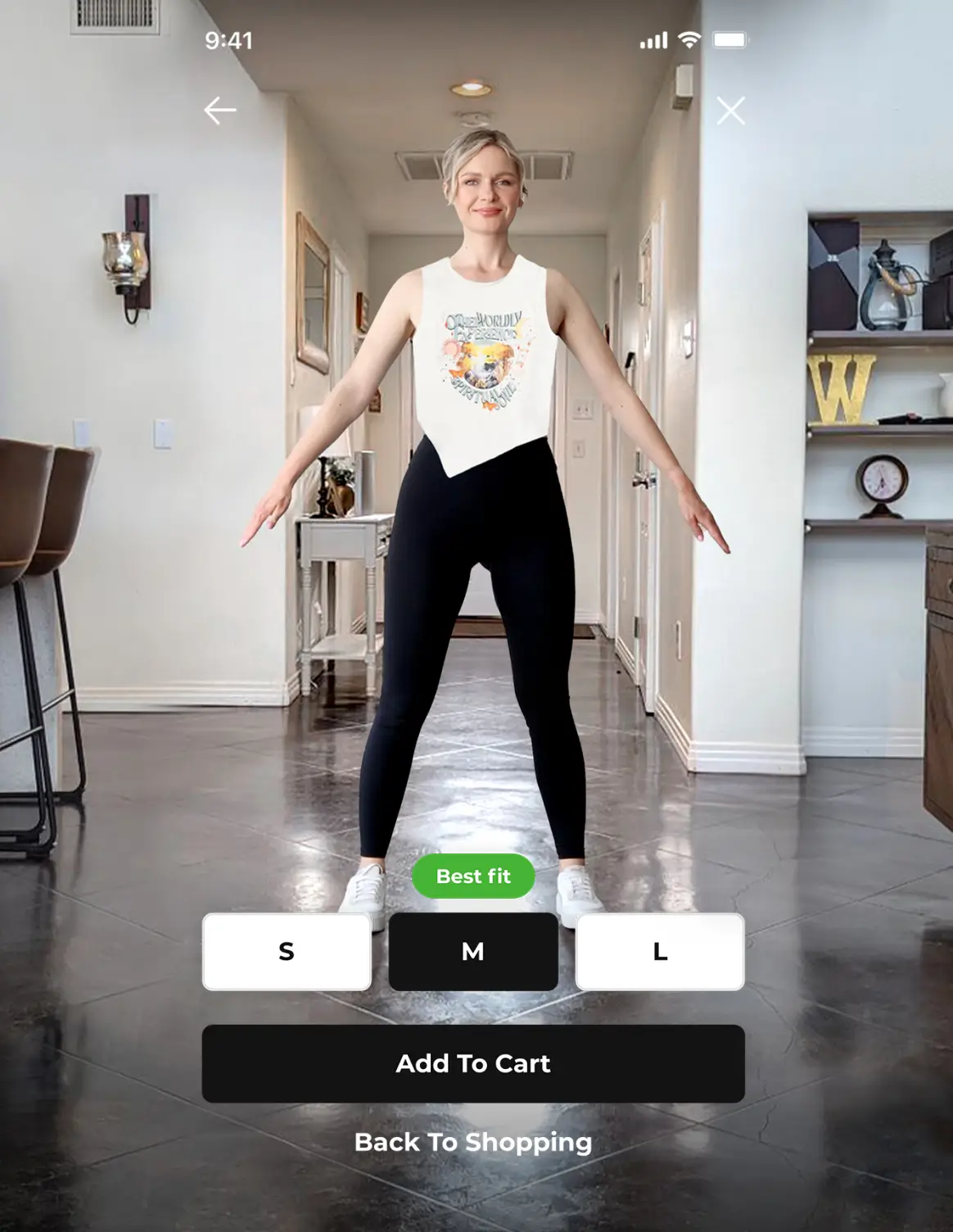Technology is radically transforming the retail landscape, enhancing the customer experience and offering struggling brick-and-mortar retailers a lifeline. Vadim Rogovskiy, 3DLOOK Co-founder and Chief Executive Officer, speaks with research analyst Mike Jarmus about how technology is set to impact the future of retail in the latest episode of GLORY’s Ready For Change? podcast series.
Podcast transcript:
Q: What inspired you and your co-founders to start 3DLOOK?
Vadim: Solving huge problems for hundreds of millions of people, predominantly using a smartphone camera. I was excited by the technological potential of digitized body data – allowing anyone to create a ‘digital passport’ using their own accurate, unique measurements captured from just two images. These digital passports could be used not only for size recommendations, but so much more. You could send this data to your doctor, your fitness coach, or use it to build your avatar in an online game, for example. This idea of a digital passport was actually 3DLOOK’s starting point.
Q: Sounds like an interesting origin story. Can you tell us about the innovative solutions 3DLOOK has developed since?
Vadim: We have one core product: the Body Data Platform, which stores the data collected through our mobile body scanning technology. This data enables us to offer three additional B2B solutions to the apparel retail industry.
We have YourFit, our size recommendation solution. Our widget can be easily implemented into the customer journey on any clothing e-commerce website. The user submits two images and gets an accurate sizing recommendation in seconds based on their unique body shape and measurements. The retailer can then use this data to provide the user with more precise recommendations in the future.
We also offer a solution for on-demand and customization. This allows our customers to easily and efficiently collect measurements of their consumer anywhere, anytime in seconds, without having to send a tailor to do so manually. This allows customers to scale their business without compromising the accuracy of their products.
Q: You recently attended NRF conference in New York. What are some of the emerging technologies you saw that you believe will impact the retail industry?
Vadim: What was apparent at NRF is that apparel design is moving into 3D very rapidly. Apparel designers are more and more often designing garments using 3D models of their actual prospective customers.

It’s also a very good time for omnichannel startups that help to connect offline and online retail experiences. Brick-and-mortar retailers are suffering, and are trying to do what they can to reach consumers and provide them with a more convenient experience. These are the main categories that I expect to see substantial growth, and there were plenty of impressive startups in these spaces present at NRF.
Q: So how will technology redefine the way we create and deliver customer experience in retail?
Vadim: Omnichannel is the Holy Grail that will remove the barrier between physical and online retail. There is no industry standard yet, but startups are playing with emerging technologies like facial recognition as a way to connect a physical shopper to their digital counterpart.
Soon retailers will be able to identify consumers as they enter a store, track their activity inside the store, and then use these data points to recommend them items when they shop online. Physical retail will no longer be the place to buy, but the place to experience before consumers make their purchases online.
Q: Over the next 10 years, what innovative technologies are likely to shape the future of retail?
Vadim: Thanks to 5G, virtual try-on applications will become more feasible globally. Due to slow mobile internet in many countries, enabling consumers to try on multiple garments in augmented reality (AR) can be problematic.
With the help of 5G, everyone will be able to generate and visualize realistic 3D models in AR. Consumers will be able to ‘wear’ full body filters that project virtual garments on to their body without leaving their home.
Data will also play a huge role. Already, we have each created and uploaded so much personal data that hasn’t been put to effective use. Our photos on social media, for example, could be analyzed and used to provide sizing, style and fit recommendations.
Tech startups will learn how to collect more and more data about our online and offline activities, and combine these into one profile. This is a complex task, but once achieved this combined data can be used to provide recommendations with unprecedented precision and relevance.
Q: What is your view on the balance between digital and physical presence for a successful brand or retailer?
Vadim: Brick-and-mortar retailers are moving online, and reshaping their retail locations to make them more experiential. On the other hand, digitally native retailers are opening offline outlets in order to interact with their customers offline.
There should be no difference between digital and physical presence – omnichannel should be every retailer’s goal and brick and mortar can not be the end experience. The online experience needs to be as dynamic and engaging as the offline experience. The retailer of the future has to be with its customer on every part of the consumer journey, whether offline, online, in virtual reality, or elsewhere.
It’s important to have all of these touchpoints. Not just to convert customers, but to create long-term value and foster an indispensable relationship between the brand and consumer.
Q: Thank you very much, Vadim, for the good discussion.
Vadim: Thanks for having me. It’s great to be on the GLORY Podcast.
What is GLORY? GLORY is a global leader in cash technology solutions. It provides cash automation technologies that help a range of industries to optimize the handling, movement, and management of funds. GLORY’s Ready For Change? podcast series seeks to educate listeners on the changes occuring in banking, retail, and business.
Moving with the times
Consumer trends suggest that there is a demand for personalized and made-to-order fashion now more than ever. While fast fashion has dominated the industry over the past 20 years, consumers are shunning inexpensive, poor quality attire in favour of better fitting, longer-lasting garments that align with changing attitudes towards ethics and sustainability, according to McKinsey.
With some 65% of shoppers planning to buy less, but buy better following the pandemic, it’s no wonder that retailers like J. Crew, Neiman Marcus, and J.C. Penney are fighting for survival. Meanwhile, those listening and responding to changing consumer demands – offering greater sustainability, quality, and size inclusivity through slower, made-to-order business models – are thriving.
The fashion industry has its issues – poor fit, high emissions, and a mountain of waste – but it also recognizes the need to change. In September, Giorgio Armani defied predictions of tailored fashion’s demise with the launch of Armani’s new made-to-order line of women’s customizable jackets, trousers, skirts, and outerwear, recognizing that “Now, more than ever, clients want something meaningful”.
A Covid challenge for made-to-measure businesses
Transitioning towards a slower fashion supply chain would allow the industry to appease changing consumer demands. However, there are also challenges to overcome.
While stores have reopened, consumers remain fearful to return to the same pre-pandemic shopping experience. With consumers reluctant to enter dressing rooms and interact with tailors amid ongoing social distancing, revenue on London’s Savile Row – famed for its large number of tailoring businesses – is estimated to be down by as much as 85%, for instance.
It is evident that made-to-measure businesses will need to adapt, and fashion technology can offer a helping hand. Solutions such as 3DLOOK’s Mobile Tailor enable made-to-measure businesses to collect precise body measurements remotely, without the need for in-person fittings. Using a smartphone device, customers can capture their own body measurements anytime and anywhere using two photos taken on any smartphone device.
Request a trialSuch solutions are vital to capturing accurate body data without compromising safety in the current climate. Yet, the reality is Covid-19 has only accelerated the need for new solutions that, with e-commerce, spending is surging and consumer appetite for shopping experiences driven by retail technology is rising, according to McKinsey, consumers would have eventually demanded anyway.
With Covid-19 just a stumbling block that we will eventually overcome, any change in demand for suits and other tailored attire is likely to be temporary. However, the way these garments are produced, personalized, and sold is bound to face more permanent change.



